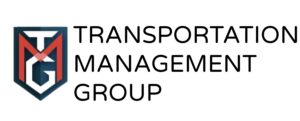Transportation Management Group
The Role of Technology in Improving Trucking Safety
Home / Blog
The Role of Technology in Improving Trucking Safety
- November 14, 2023

The trucking industry is no stranger to challenges, and perhaps one of the most critical aspects it constantly addresses is safety. With the ever-increasing demands on the transportation sector, ensuring the safety of drivers, cargo, and other road users is paramount. Fortunately, technology has emerged as a powerful ally in the pursuit of enhanced trucking safety. In this comprehensive exploration, we will delve into the various ways technology is playing a pivotal role in improving safety standards within the trucking industry. From advanced driver assistance systems to real-time monitoring, these innovations are not only mitigating risks but also reshaping the landscape of trucking safety in profound ways.
The Evolution of Safety Technologies
Advanced Driver Assistance Systems (ADAS)
One of the most significant strides in enhancing trucking safety comes in the form of Advanced Driver Assistance Systems (ADAS). These systems leverage a combination of sensors, cameras, and radar to provide real-time data about the truck’s surroundings. Features such as lane departure warnings, collision avoidance systems, and adaptive cruise control contribute to reducing the likelihood of accidents caused by human error. ADAS acts as a digital co-pilot, alerting drivers to potential dangers and, in some cases, taking corrective actions to prevent accidents.
Collision Mitigation Technology
Collision mitigation technology takes safety a step further by not only warning the driver but also actively intervening to prevent or mitigate a collision. This technology often includes automatic emergency braking (AEB) systems that can detect an impending collision and apply the brakes if the driver doesn’t react in time. Such systems are proving to be invaluable in reducing the severity and frequency of rear-end collisions, a common type of accident in the trucking industry.
Real-Time Monitoring and Telematics
Telematics Systems
Real-time monitoring through telematics systems is revolutionizing how trucking companies manage their fleets. These systems utilize GPS technology and onboard sensors to track the location, speed, and behavior of trucks in real time. This not only aids in route optimization but also allows for continuous monitoring of driver behavior. Companies can receive immediate alerts for events like harsh braking or speeding, enabling proactive intervention to address potential safety concerns.
Electronic Logging Devices (ELDs)
Mandated by regulatory authorities, Electronic Logging Devices (ELDs) have become integral to modern trucking operations. While their primary purpose is to accurately record and manage driving hours to ensure compliance with Hours of Service (HOS) regulations, they also contribute significantly to safety. By preventing drivers from exceeding their allowable driving hours and promoting regular rest breaks, ELDs help reduce fatigue-related accidents—a prevalent concern in the industry.
Connectivity and Communication
Vehicle-to-Everything (V2X) Communication
Connectivity is a key enabler of safety advancements in trucking. Vehicle-to-Everything (V2X) communication allows trucks to “talk” to each other and to infrastructure elements such as traffic lights and road signs. This communication can provide real-time information about potential hazards, traffic conditions, and more. With V2X, trucks can anticipate and react to situations more effectively, fostering a safer environment for both the driver and other road users.
Emergency Communication Systems
In the event of an emergency or breakdown, swift communication is paramount. Advanced emergency communication systems in trucks enable drivers to quickly summon assistance or report incidents. These systems can automatically transmit critical information to emergency services, streamlining response times and ensuring that help reaches the scene promptly.
Predictive Analytics and Artificial Intelligence
Predictive Maintenance
Ensuring the safety of a truck goes beyond the driver—it extends to the vehicle itself. Predictive maintenance, powered by artificial intelligence and predictive analytics, allows trucking companies to anticipate when components are likely to fail. By proactively addressing potential issues, companies can reduce the risk of unexpected breakdowns that could compromise safety on the road.
AI-Powered Driver Monitoring
Artificial Intelligence is being increasingly employed in driver monitoring systems. These systems use AI algorithms to analyze driver behavior, detecting signs of fatigue, distraction, or impairment. If concerning behavior is detected, the system can alert the driver or even trigger automated safety measures, such as slowing down the vehicle or sending alerts to fleet managers.
Overcoming Challenges and Adoption Barriers
Integration Challenges
While the potential for improving safety through technology is vast, the integration of these systems poses challenges. Ensuring seamless communication between different technologies and platforms is crucial. Companies need to invest in systems that can integrate with each other to provide a comprehensive safety net rather than isolated solutions.
Cost Considerations
The adoption of advanced safety technologies often comes with a financial investment. Trucking companies, particularly smaller ones, may be hesitant due to the perceived high costs. However, it’s essential to view these investments as long-term strategies that can result in substantial savings through reduced accidents, insurance premiums, and maintenance costs.
The Future of Trucking Safety Technology
Autonomous Vehicles and Platooning
The future of trucking safety is closely tied to the development of autonomous vehicles. While fully autonomous trucks are still in the testing phase, the potential for reducing accidents caused by human error is significant. Additionally, platooning—where multiple trucks travel in a close convoy with the help of automated driving systems—can enhance fuel efficiency and safety.
Enhanced Sensor Technologies
As sensor technologies continue to evolve, trucks will be equipped with even more advanced detection capabilities. Improved radar, LiDAR, and camera systems will enhance a truck’s ability to perceive its surroundings, making it better equipped to avoid collisions, even in complex traffic scenarios.
The integration of technology into the trucking industry is ushering in a new era of safety. From advanced driver assistance systems that act as vigilant co-pilots to real-time monitoring and connectivity that enable proactive interventions, these technologies are transforming how the trucking industry approaches safety. While challenges such as integration and cost considerations exist, the long-term benefits in terms of accident prevention, improved driver well-being, and operational efficiency make the investment worthwhile.
As we look to the future, the continued development of autonomous vehicles and enhanced sensor technologies holds the promise of further elevating safety standards in trucking. Embracing these innovations is not just a matter of compliance; it’s a strategic decision to safeguard the well-being of drivers, protect valuable cargo, and contribute to a safer and more efficient transportation ecosystem. In the ever-evolving landscape of trucking safety, technology is undoubtedly steering the industry toward a brighter and safer future.
